- What We Do
- Agriculture and Food Security
- Democracy, Human Rights and Governance
- Economic Growth and Trade
- Education
- Environment and Global Climate Change
- Gender Equality and Women's Empowerment
- Global Health
- Humanitarian Assistance
- Transformation at USAID
- Water and Sanitation
- Working in Crises and Conflict
- U.S. Global Development Lab
Speeches Shim

October 2018
Digital Health
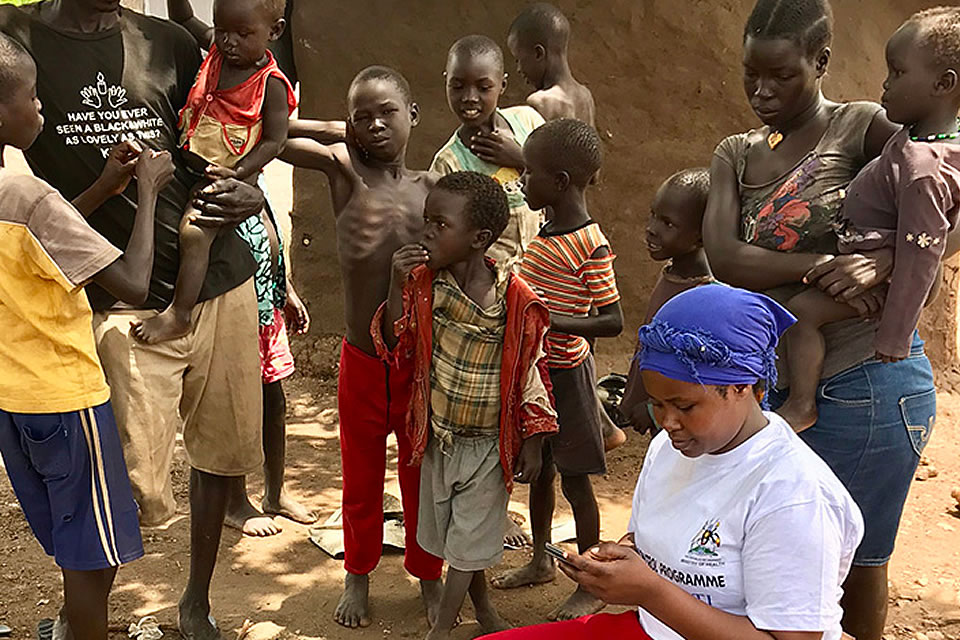
Constance, a member of a trachoma survey team, enters household data into a smartphone through Tropical Data in the Imvepi Refugee Settlement in Uganda. Tropical Data helps countries collect high-quality data by providing epidemiological, training, logistical and data-management support to national programs conducting cross-sectional surveys on trachoma.
Significant progress has been achieved in global health during the last several decades. But with just over ten years remaining to attain the 17 Sustainable Development Goals, how do we harness data and technology to deliver on the promise of “Health for All?” Digital health continues to be transformative in supporting the health system, allowing health care workers to share data instantaneously and dispense essential, life-saving medicines where they’re needed most. It also helps us understand which interventions work best, and ensures that children are vaccinated on time. USAID and the broader donor community are working to leverage our collective strength and bring to scale digital health tools aiming to improve health for vulnerable populations around the world.
Looking Forward: USG's Approach to Digital Health
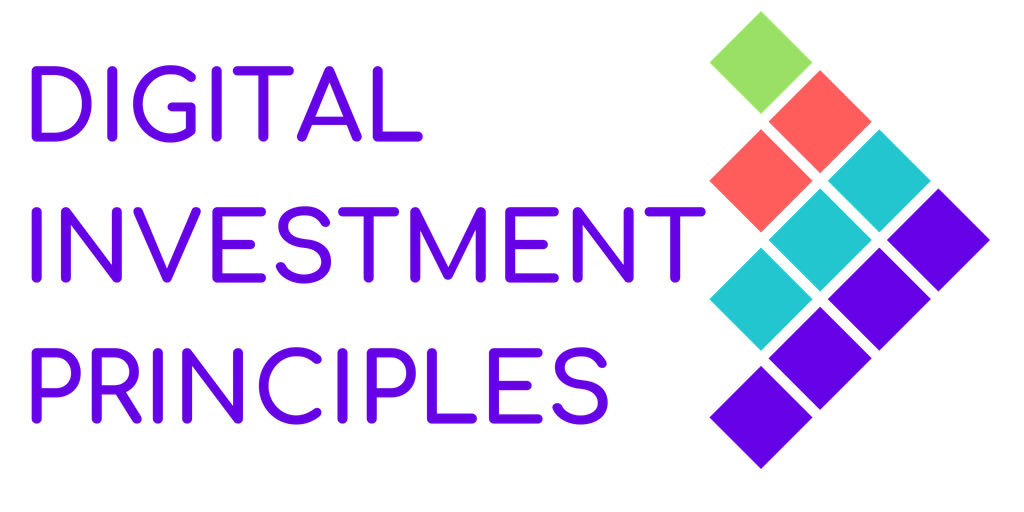
According to the newly launched Principles of Donor Alignment for Digital Health, investments in digital technologies that support country health systems must advance and align with national strategies. USAID, CDC, and the U.S. Office for the Global AIDS Coordinator were co-drafters of the principles, and among the 30 major funders endorsing them when they were launched at the World Health Summit in Berlin last month.
“To increase countries’ journey to self-reliance, we must ensure that our investments in in-country digital health systems can be transitioned to effective management, use and sustainability by host governments and other country partners over time,” said David Stanton, senior advisor in the USAID Global Health Bureau Executive Office. “For the first time, donors acknowledge this direct responsibility and will take action to ensure their investments meet these requirements.”
The Agency’s contributions to and support for these donor principles builds on a series of related efforts including:
- crafting a U.S. government statement on digital health delivered at the WHO Executive Committee meeting in January 2018
- contributing to the WHO digital health resolution adopted at the 71st World Health Assembly meeting in May 2018.
As a next step, the Agency will publish a Digital Health Vision for Action to articulate how it anticipates operationalizing the donor principles it has endorsed. It also will continue to champion co-investments in digital health global goods and technical support to countries, such as through the Digital Square mechanism that to date has leveraged $30 million from nine donors.
Digital Health Global Goods
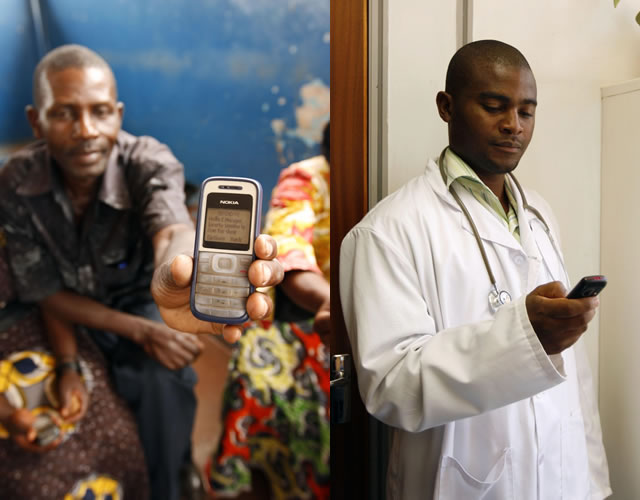
Photo credit: Merrick Schaefer/USAID
What if there was a way to help local organizations and partner governments build their own high-quality digital health software applications based on international standards? This is the purpose of Digital Health Global Goods. USAID, in partnership with other donors, frequently invests in software tools that can be reused for multiple health activities in different countries.
iHRIS is an example of an Agency-led global good. Starting in 2005, the Agency invested to create this open source tool to help ministries track, train and manage their health workforce. Today the tool is used in 23 countries.
District Health Information System 2 (DHIS2) is another global good that USAID helped build and implement. This platform has been supported by almost every major donor in the global health space and is the national aggregate health information system in 67 countries.
A common misconception about global goods is that they are free. “Free” and “open source” means there are no licensing fees associated with the software and that it can be customized to specific needs. But using free and open-source software often requires investments in hardware and software developers, workforce capacity, and governance. These types of investments often support the health system on its journey to self-reliance by enabling local actors to build and maintain the systems themselves.
There are now software global goods for almost every part of the health system and they are designed to work together. If you would like support in learning more, using or even developing a global good, the central Digital Square mechanism can help.
Digital REACH: Improving Cross-border Health Information Systems
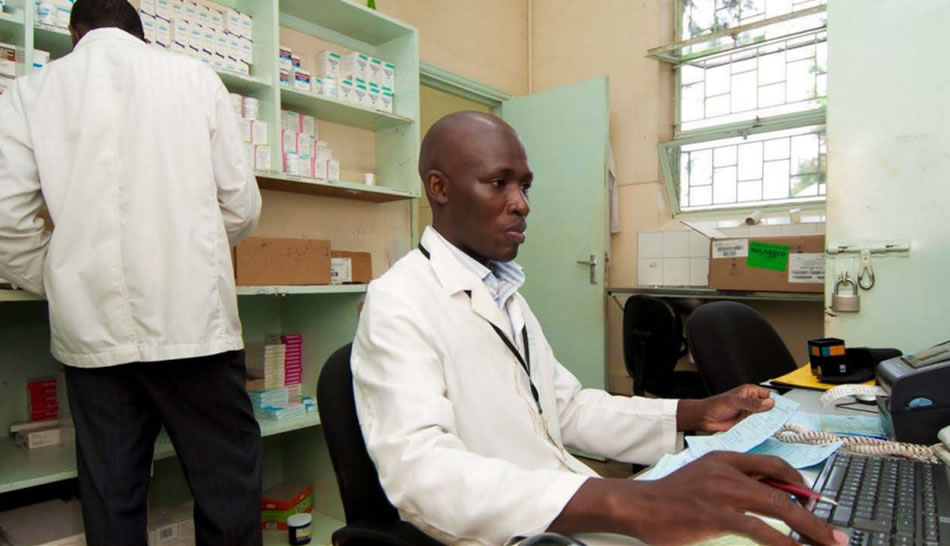
Jude Odhiambo enters prescriptions into the Antiretroviral Dispensing Tool as his colleague Sosten Kemboi picks the medicines from the shelf at the adult pharmacy at the Kenyatta National Hospital Comprehensive Care Center. The system ensures that drugs can be accounted for to the last tablet.
The Ebola outbreak in West Africa revealed major coordination and communication challenges through the multiple disconnected health data systems used for treatment, human resource support and other applications. The East African Community (EAC) recognizes similar challenges in East Africa, especially since its citizens routinely travel across borders. Interoperable health information systems can save lives, but no one country can address this challenge alone.
The EAC, with its philosophy of ‘One People, One Destiny’ has embarked on the Digital Regional East African Community Health (REACH) Initiative to support interoperability of digital health systems across the EAC partner states of Burundi, Kenya, Rwanda, South Sudan, Uganda and the United Republic of Tanzania.
The Digital REACH Initiative will build on and work with—rather than replace—national digital health strategies to support the EAC’s integration agenda: 1) free movement of people, goods and services; 2) cross-border health services and universal health care; and 3) surveillance of potential disease outbreaks.
The Digital REACH Initiative is a regional platform to coordinate the application, use and seamless interoperability of digital health systems across EAC partner states. The initiative also aims to create an enabling environment for private sector investments.
The EAC will play a key role in creating and supporting an enabling environment, including leadership, governance and strategy to ensure sustainability and scale of the Digital REACH Initiative, which is supported by USAID and other stakeholders .
GLOBAL HEALTH HIGHLIGHTS
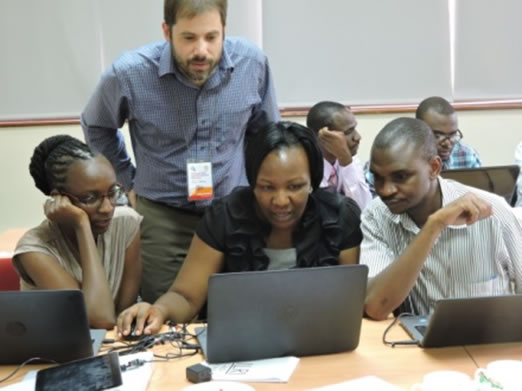
Participants of a CSPro workshop in Nairobi, Kenya being taught by Josh Handley, a CSPro developer and trainer from the US Census Bureau. Photo credit: Christine Bukania, International Potato Center.
CSPro
The Census and Survey Processing System (CSPro) is a gold-standard global-good software package developed by the U.S. Census Bureau to enable countries and organizations conduct efficient, high-quality censuses and surveys. USAID’s Office of Population and Reproductive Health—through a 50-year inter-agency agreement with the U.S. Census Bureau—made CSPro public domain and free of charge in 2000 and has supported its development ever since. Dr. Jacob Adetunji, a senior demographer at USAID, says the Agency began funding and developing this global good based on an urgent need for data efficiencies. “The major benefits of CSPro are synergy and efficiency ranging from data entry and editing to processing and dissemination.” One-hundred-and-sixty countries, from Djibouti to India, and many NGOs, universities and partners now rely on CSPro to collect and process census and survey data. Recent innovations include data collection on mobile devices (read about the Lesotho mobile pilot), with more enhancements on the horizon.
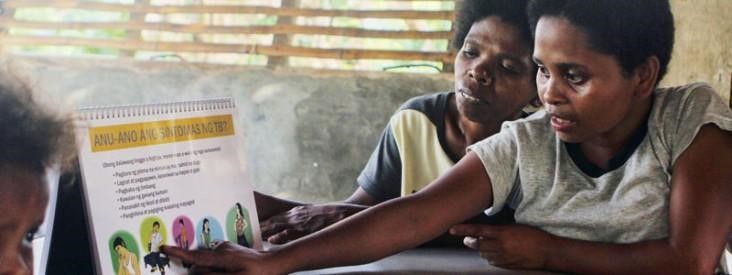
Women look through a flipchart that helps debunk TB myths and misconceptions in villages in the Philippines. 2016. Photo credit: Emma Libao. Courtesy of USAID Philippines.
USAID Administrator Mark Green Announces New Approach to End Tuberculosis
TB remains the leading infectious killer worldwide, and efforts to combat the disease must be expanded. At the United Nations General Assembly, USAID Administrator Mark Green announced a new business model to support the fight to end TB. The Agency’s investments are most effective when they are coupled and aligned with strong commitments from other governments and partners. To accelerate action, the Agency launched “The Global Accelerator to End Tuberculosis,” which will leverage additional resources from countries, private sector partners and other local organizations to meet the UN target of treating 40 million people by 2022. The model will focus on the countries with high burdens of TB and in which the Agency has existing partnerships. This way, the Agency can reprogram funds to better align with local communities and partners to deliver performance-based results toward the global target. This change in approach will ensure that the Agency is fighting to end TB effectively and efficiently. Read the press release.

Photo credit: Dave Cooper for USAID
Launch of USAID Advancing Nutrition
We recently announced the launch of the Agency's flagship multi-sectoral nutrition project, USAID Advancing Nutrition, which draws on global nutrition experience to design, implement and evaluate programs that address the root causes of malnutrition. By scaling up efforts to reduce malnutrition and focusing on the critical period between pregnancy and a child’s second birthday, USAID Advancing Nutrition supports the Agency’s efforts to save lives and promote strong, productive citizens and self-reliant societies. Learn more here.
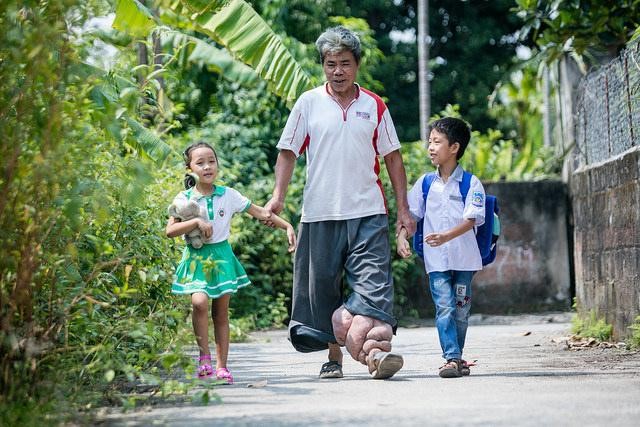
Truong Van Duc and his grandchildren walk through their village in Ly Nhan district in Vietnam’s Ha Nam Province. Duc suffers from lymphedema, caused by lymphatic filariasis, a neglected tropical disease. Photo credit: RTI International/Nguyen Miinh Duc.
Eliminating Lymphatic Filariasis in Vietnam
Congratulations to the Republic of Vietnam for eliminating lymphatic filariasis (LF) as a public health problem! The USAID Neglected Tropical Diseases program began supporting Vietnam in its efforts to eliminate LF—also known as elephantiasis—in 2011. Lymphatic filariasis disrupts the body’s ability to drain and redistribute lymph fluids and frequently causes severe swelling of limbs and other body parts. Painful disfigurement is common, making daily activities like walking and working extraordinarily difficult. USAID supported Vietnam to gather evidence to verify that the disease has been eliminated as a public health problem and to ensure that people living with the advanced LF have access to high-quality health care. The World Health Organization validated Vietnam’s elimination of LF in early October 2018. Read more here.
LOOK AHEAD
Global Health Security Agenda Ministerial Meeting - November 6–8
World Pneumonia Day - November 12th
International Conference on Family Planning - November 12–15
World Prematurity Day - November 17th
USAID GH MEDIA MENTIONS
Ebola Threats Anywhere are Health Threats Everywhere
October 15 – USAID Medium
Bringing Tropical Data to the Pacific Islands
August 21 – RTI Medium
Temperature Check: Border Screening of Travelers Key to Stopping Ebola from Spreading
September 14 – USAID Medium
Philips and Global Healthcare Leaders Develop Innovative Resuscitation Device to Help Reduce Neonatal Mortality
September 26 – PR Newswire

Comment
Make a general inquiry or suggest an improvement.